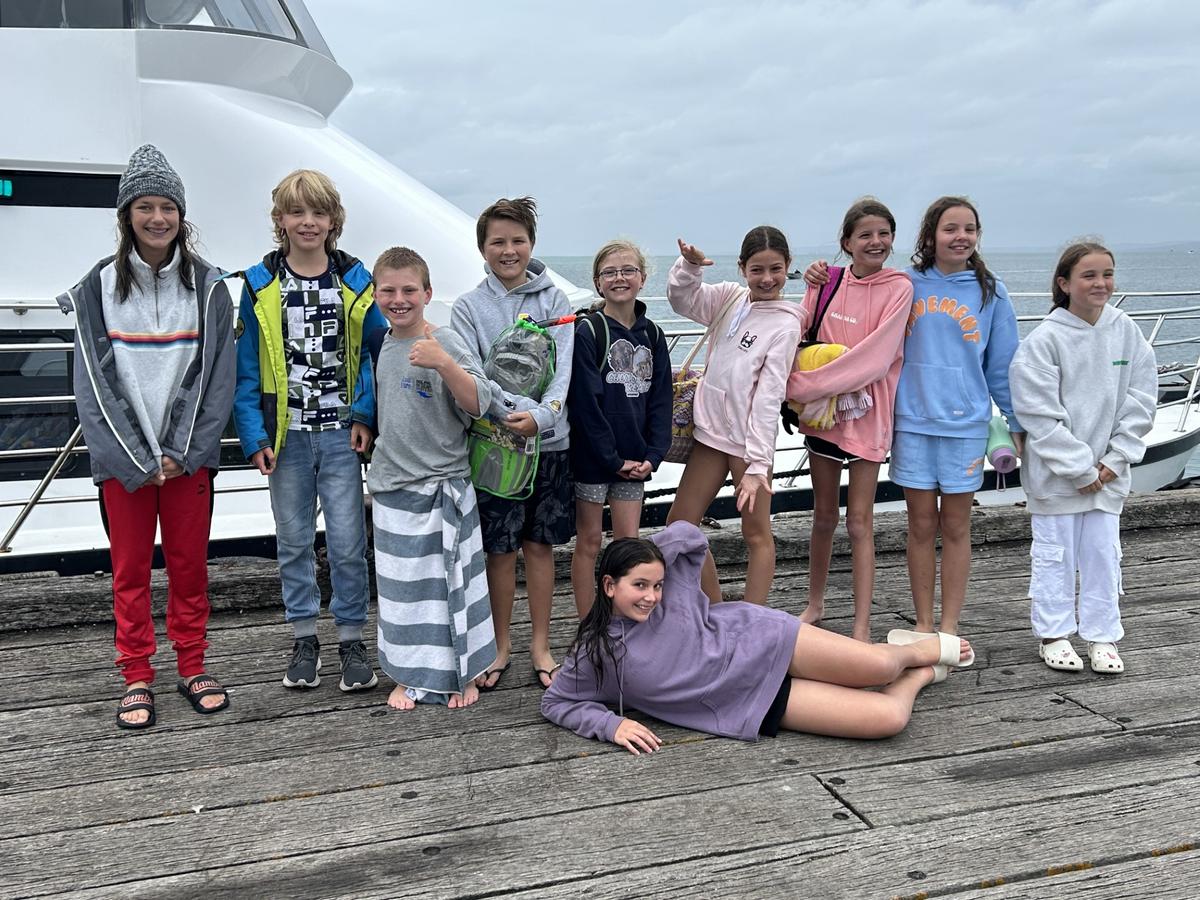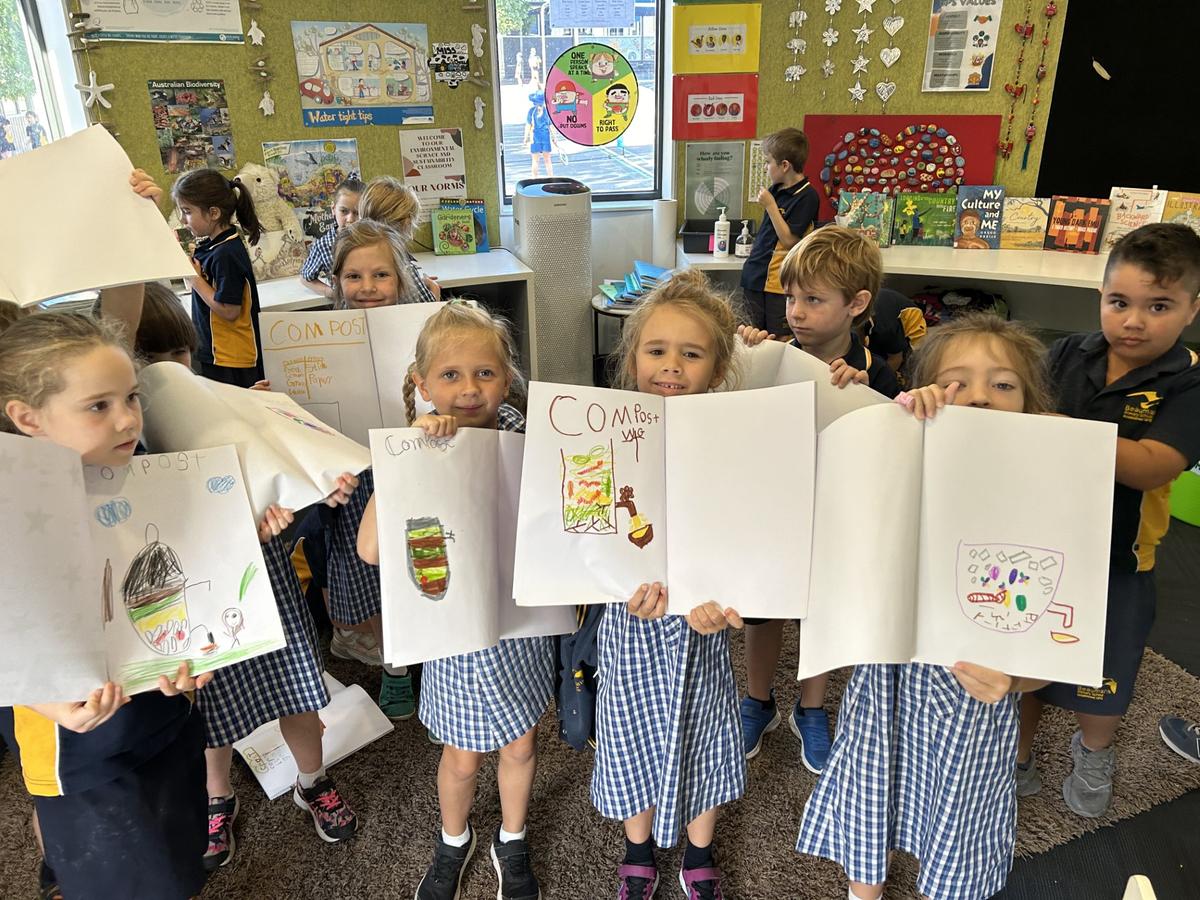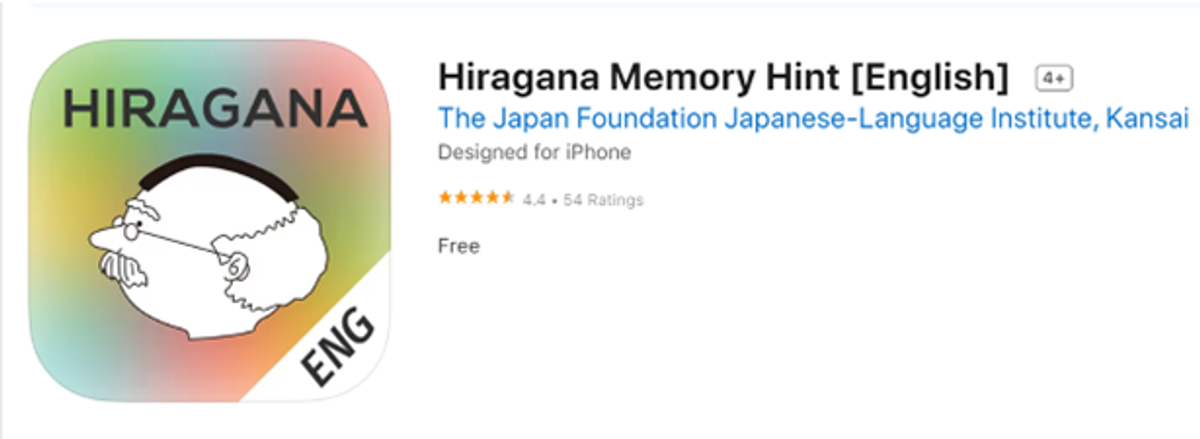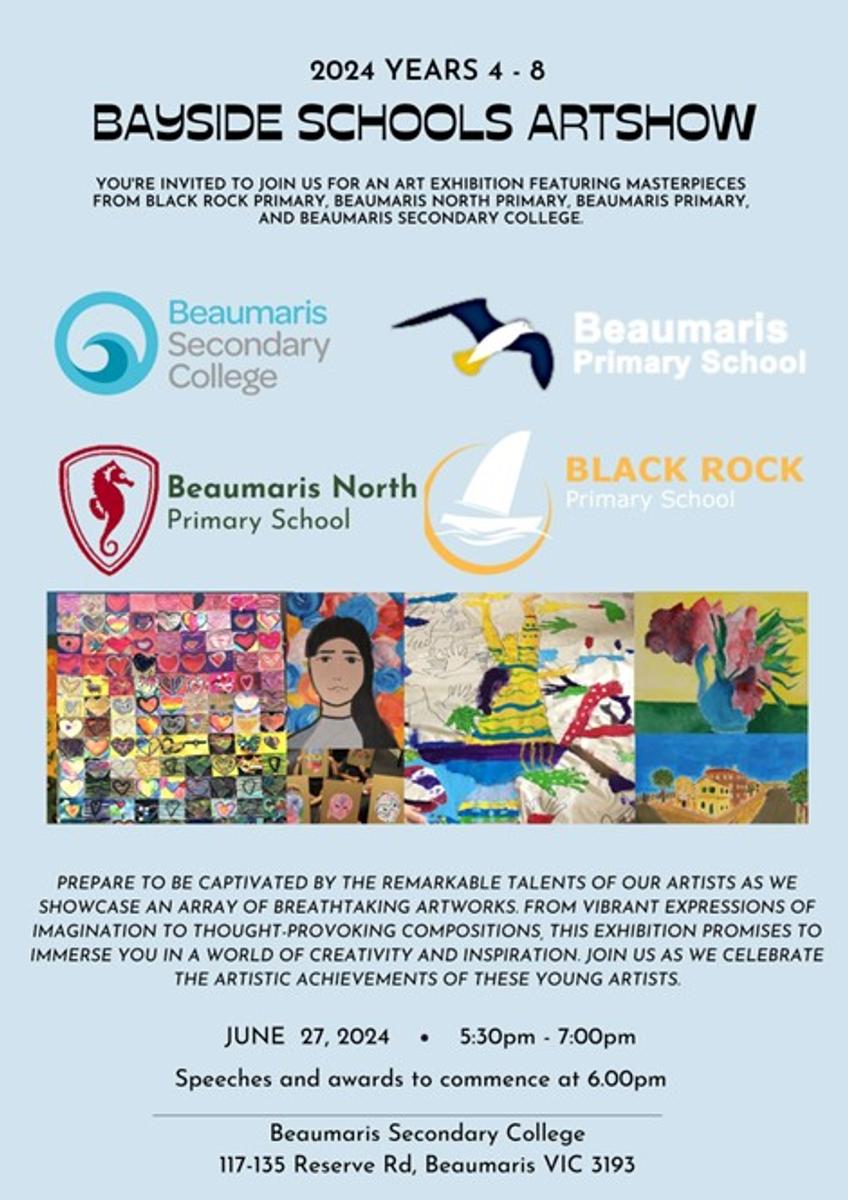Specialist Classes

Environmental Science and Sustainability
What’s Happening in Environmental Science & Sustainability: Term 2
What’s been happening in Environmental Science & Sustainability during Term 1:
The students from Prep to Year 6 have all enjoyed their first term studying Environmental Science and Sustainability. The younger levels Prep to Year 3 loved working in our special new room, and have been particularly excited when exploring the Kitchen Garden and watching our tomatoes, pumpkins, corn and purple beans grow. We were harvesting and learning about our herbs, composting, companion planting and learning about the role of the bees in fertilisation. The Year 4s have been creating their own “Sustainability Chatterboxes”, which they will love sharing with their families. The Year 5s have been working in the garden, preparing the soil for planting, watering and re-establishing our compost system. Both Year 5s and 6s have been investigating the Great Pacific Garbage Patch, researching microplastics and creating some brilliant digital and hard copy posters to help educate our community about reducing the use of plastic and protecting our environment. A wonderful first term’s work at all levels!
What will be happening this term in Environmental Science & Sustainability:
We will continually weave Waste into all that we do but Water will be our main theme for Term 2. We will continue to focus on reducing our footprint, particularly in the area of Water, and working to understand how the expansion of the 3Rs (reduce, reuse, recycle) to the newer 6Rs (refuse, rethink, reuse, reduce, repurpose, recycle) includes a big focus on water and the reduction of its usage in production and recycling. We look forward to keeping you updated on our progress and once again welcome families to share any ideas/products/habits for including on our new Sustainable Living webpage which will be up and running soon. During Term 2, the students will celebrate World Bee Day on 20th May, and participate in a combined celebration of World Environment Day and World Oceans Day on Thursday 6th June, which focuses on land restoration, desertification and drought resilience and catalysing action for our ocean and climate.
Prep
Our Preps will identify ways to use water at home and at school, discuss why saving water is important and will explore the benefits of reusable water bottles. They will identify the storm water drains within and around our school and recognise what should and shouldn’t go down the drains. From this knowledge base they will be able to explain what water pollution is and how it affects our water.
Year 1
Year 1 students will draw on their life experiences to understand the uses for water, where we can find it in and around our school and will investigate water saving strategies at home and school. They will participate in water waste experiments and describe storm drains and how we can avoid water pollution, as well as explaining what it is, how it is caused and how it affects our water.
Year 2
Year 2 students will identify ways we use water at home and school, where it is found around our school and investigate strategies of water conservation. They will explore the journey storm water takes after rain and also the effects of water pollution on marine animals. Students will research marine animals and learn about the important role they play within our environment while also clarifying what water pollution is and how it affects our water quality.
Year 3
This term the students will learn about water coming from a variety of natural sources including rain, underground and surface water and be able to describe the key elements of the natural and urban water cycle. They will understand precipitation, condensation and evaporation as elements of the natural water cycle and recognize that sewerage, stormwater and reservoirs are parts of our urban water cycle, while also investigating the supply and demand for water in Melbourne. Students will examine the sewage treatment process in Victoria and draw a diagram showing this. They will learn about the Pink Lake in Melbourne and what causes it, while also learning about desalination. Students will identify ways we can save water while also considering water pollution and the impact of pollutants within the environment.
Year 4
This term the students will learn about water coming from a variety of natural sources including rain, underground and surface water and be able to describe the key elements of the natural and urban water cycle. They will understand precipitation, condensation and evaporation as elements of the natural water cycle and recognize that sewerage, stormwater and reservoirs are parts of our urban water cycle, while also investigating the supply and demand for water in Melbourne. Students will examine the sewage treatment process in Victoria and draw a diagram showing this. They will learn about the Pink Lake in Melbourne and what causes it, while also learning about desalination. Students will identify ways we can save water while also considering water pollution and the impact of pollutants within the environment.
Years 5 & 6
Year 5 and 6 students will explore the natural water cycle and recognise the elements of precipitation, condensation and evaporation. They will also investigate the urban water cycle and learn that sewage, stormwater and reservoirs are parts of the cycle and investigate how the sewage treat process operates in Victoria. Students will research the benefits of drinking tap water, recognise reverse osmosis as a method in the desalination process and learn about water availability globally.
SPECIAL EVENTS
20th May World Bee Day
6th June World Environment and World Oceans Days Combined
Physical Education
What’s Happening in Physical Education: Term 2
Term Two includes our Year 4-6 District Cross Country event, winter sport and indoor sports such as volleyball and badminton. Towards the end of term students will begin preparations for the Term 3 House and District Athletics events. With cooler weather approaching please ensure students have several clothing layers to enable them to choose the appropriate clothing for PE lessons on the day. Parents are reminded that students need runners rather than leather shoes for PE and that wearing jewellery has the potential to cause injury to other students and damage to personal property during PE activities. Your help in preparing your child for PE ensures less time is lost in class time.
Prep
Practise fundamental movement skills and movement sequences using different body parts and in response to stimuli in indoor and outdoor settings.
Participate in games with and without equipment.
Follow rules when participating in physical activities.
Year 1 and 2
Perform fundamental movement skills in different movement situations in indoor and outdoor settings.
Incorporate elements of effort, space, time, objects and people in performing simple movement sequences.
Discuss the body’s reactions to participating in physical activities.
Year 3 and 4
Practise and refine fundamental movement skills in different movement situations in indoor and outdoor settings.
Perform movement sequences that link fundamental movement skills for sport skills and athletics events.
Adopt inclusive practices when participating in physical activities.
Apply innovative and creative thinking in solving movement challenges.
Year 5 and 6
Practise specialised movement skills and apply them in different movement situations in indoor, outdoor and aquatic settings.
Propose and apply movement concepts and strategies.
Participate in physical activities designed to enhance fitness, and discuss the impact of regular participation on health and wellbeing.
Participate positively in groups and teams by encouraging others and negotiating roles and responsibilities.
Apply critical and creative thinking processes in order to generate and assess solutions to movement challenges.
Demonstrate ethical behaviour and fair play that aligns with the rules when participating in a range of physical activities.
Year 5 and 6 Winter Sport
The District Interschool sport program allows us to field Open and Girls teams in 5 winter sports and an Open team in AFL. There are places for 126 students in this program. Our remaining students will take part in an intra school competition here at school.
Teams that are successful in the District competition will play in a Division final early in Term 3.
See the BPS Compass Calendar for up to date information on dates for Cross Country, Winter Sport, girls football and all other school events.
Performing Arts
What’s Happening in Performing Arts: Term 2
This term, the focus for all year levels is MUSIC.
All year levels will practice the elements of music (PITCH, BEAT, RHYTHM, VOLUME & TEMPO) through singing, playing percussion and non-percussion instruments, and movement.
Preps and Year 1s will be create simple rhythmic and melodic patterns using percussion instruments including xylophones.
Year 2s will be introduced to the music staff (5 lines) and begin to place notes through listening and melodic dictation, placing notes according to pitch, e.g. higher/lower/the same. We will also listen to and begin to identify orchestral instruments by sight and sound.
Year 3 & 4 will be working on recorders and developing an understanding and knowledge of written notation, note names and values as well as time signatures.
Students in Year 5 & 6 will be introduced to a variety of genres, composers and instruments. They will form opinions and discuss preferences for styles of music.
Year 5s will begin to learn about notation, major and minor chords and how to create a simple accompaniment to known songs.
Year 6s are looking forward to commencing work on their 2024 production of “Charlie and the Chocolate Factory”.
Auditions will take place early this term and performances will be held at Sandringham Secondary College.
DRESS REHEARSALS – MONDAY OCTOBER 14TH
PERFORMANCES – TUESDAY & WEDNESDAY 15TH & 16TH OCTOBER
More details will follow as we enter the process more comprehensibly.
Japanese
What’s Happening in Japanese: Term 2
Last term we celebrated hinamatsuri (dolls’ festival or girl’s day) in Japan on March the 3rd. This term the students will celebrate kodomo no hi (children’s day which was traditionally boys’ day) on May the 5th. All students will dress in Japanese costume for the celebration and their photos taken and uploaded to Seesaw. Everyone love celebrating these festivals.
We will also celebrate Hanimi (Cherry blossom) festival in April.
This term, we also welcome Natsuki, who will be assisting the Japanese classroom 2 days a week. The other days, she will be assisting at Mentone Girls Secondary College. Please say ‘ konnichiwa’ to her when you see her.
What will be happening this term in Japanese
Prep
This term, the Prep students will continue to learn Japanese through songs, games and classroom activities. They are learning how to write and recognise their Japanese name (written in Katakana). The students will learn about Hanami (cherry blossom festival) and plan their own festival celebration. They will also learn about kodomo no hi (May 5th). The Preps are learning how to count to 10 and write some Kanji numbers, using the correct stroke order. They will also be able to apply their speaking and listening skills by introducing themselves in Japanese.
Year 1
This term, the Year 1 students will continue to learn new passwords each week to enter the Japanese room. They will all have the opportunity to apply for classroom jobs. They will learn how to say what the weather is , the day, month and date, and ask how each how they’re feeling in Japanese. This term the students will create sentences about a daruma ( Japanese wish doll) and create one to take home. They will enjoy celebrating kodomo no hi (on May the 5th) and learn about Hanami (cherry blossom festival) The students will begin to read simple hiragana mini books.
Year 2
This term, the Year 2 students will continue to have jobs in the classroom and participate in the ambience of Japan. The students will create Daruma (wish dolls) and create sentences about their Daruma including its characteristics and what is likes and doesn’t like. They will then set their goal for the year and colour in one eye. The other eye will be coloured in if the goa; is achieved. They will make a Daruma to take home to remember their goal for the year! The students will revise reading Series 1 books from last year and begin their journey reading series 2. They will enjoy celebrating kodomo no hi (on May the 5th) and learn about Hanami (cherry blossom festival).
Year 3
This term, the Year 3 students will continue with their reading and writing, paying particular attention to the stroke order of the hiragana characters. They will revise series 1 and 2 and begin to read Series 3 hiragana mini books. They will upload their reading to seesaw. They will also continue to create sentences about their Daruma (wish doll) including it’s name, characteristics, what its name is and where it’s located. They will make a Daruma to take home to remember their goal for the year! They will enjoy celebrating kodomo no hi (on May the 5th) and learn about Hanami (cherry blossom festival).
Year 4
This term, the Year 4 students will continue with their reading and writing, paying particular attention to the stroke order of the hiragana characters. They will revise series 1,2 and 3 and begin to read Series 4 hiragana mini books. These are more challenging and have more complex sentences. They will continue to complete ikana mini tests each week to help with their hiragana and katana recognition. They will also create sentences about their Daruma (wish doll) including it’s name, characteristics, what its name is and where it’s located. They will make a Daruma to take home to remember their goal for the year! They will enjoy celebrating kodomo no hi (on May the 5th) and learn about Hanami (cherry blossom festival).
Year 5
This term, the Year 5 students will continue to practice their hiragana/ katakana reading by doing weekly ikana tests on the iPads. Students will enjoy communicating in Japanese in the classroom and working on building the time only spoken in Japanese each week. Students have the opportunity to apply for different classroom jobs. This term students will make a Daruma and set a goal for the year. Once they can create more complex sentences about their Daruma in Japanese, they can take it home. Students will celebrate Hanami festival (April) and Kodomonohi (Children’s day -boys’ festival) in May. All boys will have their photo taken in traditional costume which will be uploaded to Seesaw.
Year 6
This term, the Year 6 students will continue working on their ‘belts’. Students are encouraged to speak as much Japanese as possible and continue with their reading of the hiragana mini books. Each lesson they will complete an ikana test for character recognition. Yellow belt activities are : learning how to say classroom objects in Japanese and creating a role play about borrowing these objects, learning how to say and write the date, including months in Japanese, numbers up to 20 in kanji, reading any hiragana mini books from Series 2 and reading hiragana words including characters from a-to. They will also celebrate Hanami and Kodomonohi festivals and the boys will have their photo uploaded to seesaw dressed in traditional Japanese costume.
SPECIAL EVENTS
Hanamai festival (Cherry blossom festival) in April
Kodomo no hi (Childrens’ Day -boy’s festival) May the 5th
Japanese at home
Some students want to work on their hiragana reading at home. This app is free and may help some students who would like to practice
Visual Arts
What’s Happening in Visual Art: Term 2
Welcome back to Term 2 in Visual Art! This term, each year level will be exploring a variety of painting processes and techniques in the art room. At the beginning of the term, Miss Palermo will be completing a “smock check” for each class. Those students who do not have an art smock in their class tub, will receive a friendly reminder note for parents/guardians to send along a smock to school. Art smocks remain in a basket in each classroom and are brought to the art room each lesson.
What will be happening this term in Visual Art:
This term the students will…
Prep |
|
Year 1 |
|
Year 2 |
|
Year 3 |
|
Year 4 |
|
Year 5 |
|
Year 6 |
|
IMPORTANT DATES
- Year 6 Art Excursion to the National Gallery of Victoria (NGV)
Tuesday 14th May (Week 5) See Compass Event - Bayside Schools Art Show hosted by Beaumaris Secondary College (for students in Years 4-6)
Thursday 27th June (Week 11), 5:30pm – 7:00pm
BAYSIDE SCHOOLS ART SHOW
On Thursday 27th June, Beaumaris Secondary College will be hosting the first "Bayside Arts Show" for students in Years 4-8 from Beaumaris P.S., Beaumaris S.C., Black Rock P.S. and Beaumaris North P.S. Students in Years 4-6 are very excited to showcase their artistic talents. Later this term, each student in Year 4 and Year 5 will choose one artwork to place on display and Year 6 will be presenting their self-portraits. For more information, please read the art show poster attached.
ART SMOCKS
Please ensure your child has a NAMED art smock. Art smocks remain in a basket in each classroom and brought to the art room each week for their lesson. If your child does not have an art smock, they can be purchased via Primary School Wear. https://www.psw.com.au/schools/beaumaris-primary-school.html Alternatively, art smocks can also be purchased from Kmart, Target, Big W, any craft store… Or even an old oversized shirt from home is fine too!
VOLUNTEERING:
Please keep your eyes peeled for volunteering opportunities throughout Term 2 in the art room. A link to volunteer.org will be posted fortnightly in the school newsletter (when required for specific year levels). Please remember that all volunteers are required to have a Working with Children’s Check.






